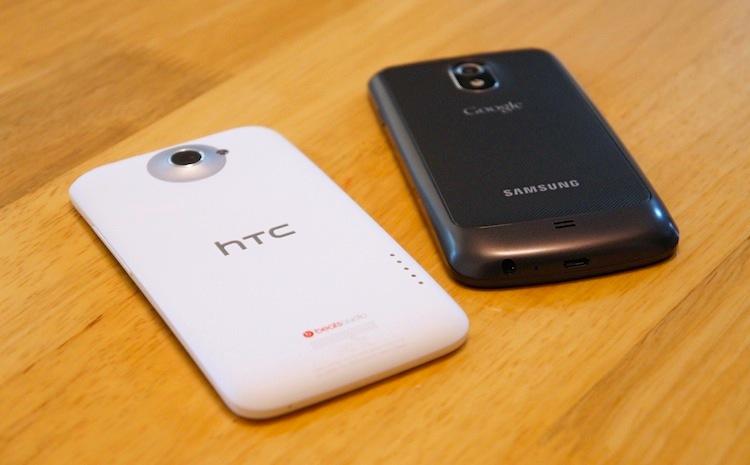
If you take a broad gander at the current smartphone market and all it has to offer, a lot of the options are beginning to look a lot alike. Most smartphones are large, sleek, black slabs that are often composed of remarkably similar components, if not the very same ones.
Take two of the hottest devices on the market, for instance: HTC's One X and Samsung's Galaxy S III. These two have been duking it out for the top spot in our Official Smartphone Rankings since the Galaxy S III started launching around the globe. On paper, there is a clear winner, but not by a very large margin. Here in the States, both devices come with 1.5GHz dual-core Snapdragon S4 chipsets, LTE connectivity, 8-megapixel cameras and Android 4.0. The differences are the 720p displays (4.7-inch S-LCD2 on the One X and 4.8-inch HD Super AMOLED on the Galaxy S III), RAM, the removable battery on the Galaxy S III and the microSD card slot, all of which vary in importance depending on individual preferences.
But specifications are only half the battle. Design and build quality are also a major factor when it comes to these two devices … or any devices, for that matter. Last month, I explained that even though the Galaxy S III wins the spec battle, I still choose the One X.
The Galaxy S III is largely reminiscent of the design and build quality Samsung has become notorious for – overuse of plastics, super lightweight and arguably fragile feeling. (Note that the feel isn't always reflective of the actual durability.) Much like the Galaxy Nexus and the Galaxy S II, the Galaxy S III sports a super thin battery door and a removable battery. And, depending on your tastes, some feel the actual look of the device is grotesque. (I happen to agree.)
The design of the HTC One X, on the other hand, is the turning of a new leaf for HTC. Instead of the usual combination of metals and matte-finished plastics, HTC opted for a unibody polycarbonate design. Of course, that prevents you from removing the battery, which has a few downsides of its own. But the One X is solidly built and, in my opinion, is the most beautiful phone currently on the market.
(Our fearless leader, Aaron Baker, agrees to disagree and prefers the look and design of the Galaxy S III instead.)
This week, I finally got my hands on a Galaxy S III. I had been judging it from afar for a few weeks. But getting to play with one first-hand only gave credence to my presumptions. And the Galaxy Nexus I ordered from the Play Store on Tuesday arrived in the mail earlier today. While I was definitely excited to get my hands on a developer device again (one with Jelly Bean, no less), I was not excited to feel that cheap, plastic build once again.
If there is one thing I have learned from my last few personal phones, it's that design, build quality and materials play a major role in my perception of a phone. I loved the Galaxy Note, more than I ever thought I would. I was never fond of all the plastic. But coming from the Galaxy Nexus, the excessive plastic wasn't all that noticable. After the Note, however, I switched to a phone that is still easily one of the highest quality and best designed phones … ever, the Nokia Lumia 900. And after that, I went to the HTC One X. Both of these devices sport unibody, polycarbonate chassis. And both of them feel absolutely fantastic and sturdy.
Of all the designs and possibilities out there, I have to say that I'm quickly becoming an advocate of unibody phones. While removing the battery can be an issue, there is generally less creaking and sqeaking in the hardware, the phone feels better and of higher quality and, most of the time, it looks better. I wish I could say I would only buy unibody phones moving forward, but there simply aren't enough being made. However, if I could, I most certainly would.

Although durability isn't one of the primary things I look for in a phone, it is a (small) factor. I won't pass on a phone if it looks or feels fragile (I do, after all, own an iPhone). But added durability is definitely a plus. And a unibody design might just keep what happened to the owner of the phone in the picture above from happening to me. (Seriously, this picture, which made its way to Android Central this morning, makes me cringe.)
I'm curious, though. Do you prefer unibody design, readers? Or do you prefer the alternative? Does it even matter to you at all? If I could, I would buy nothing but unibody phones. Unfortunately, that isn't possible … yet. What about you?